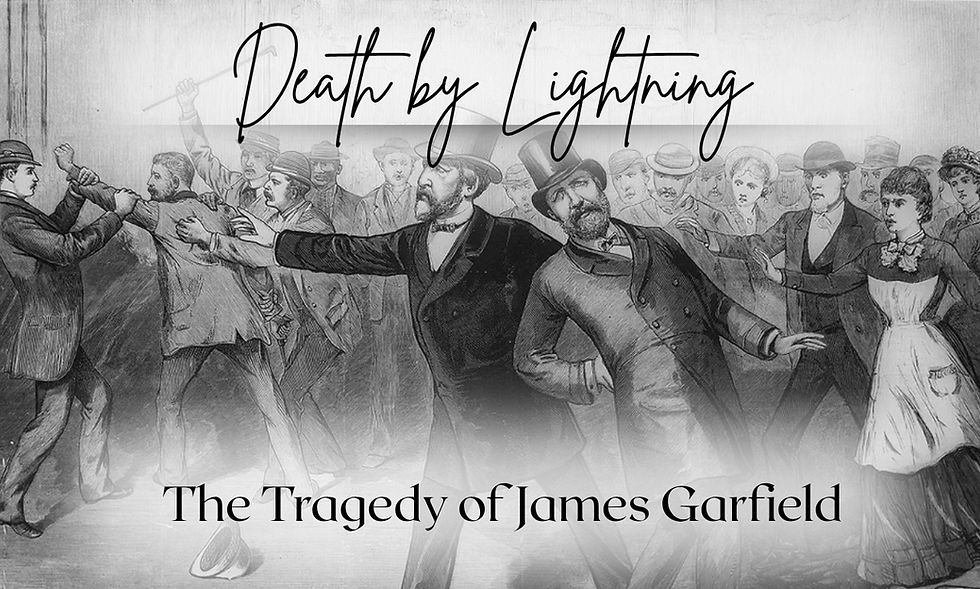Religious Upheaval of the Elizabethan Era
- Samantha Wilcoxson

- Jun 10
- 4 min read

I'm happy to welcome author Janet Wertman to the blog today. She has written thoughtful Tudor era historical fiction including her latest, Nothing Proved, featuring Queen Elizabeth I. When inviting her to be my guest, I asked Janet what made her take on Elizabeth different from what readers have encountered before, and I know you will enjoy her answer.
Welcome, Janet!
~ Samantha
Religious Upheaval in the Elizabethan Era
Guest Post by Janet Wertman
One of the things I tried to show in Nothing Proved was the huge upheaval from the dramatic changes to religion that took place over such a short time. In only ten years, England went from Henry VIII’s religious compromise (essentially, Catholicism without the Pope) to Edward VI’s reforms to Mary I’s return to Catholicism. The rules that protected during one reign condemned in a new one; narratives shifted on a dime.
I was fascinated by the wide range of responses, the way some people were unwilling to bend their beliefs to conform to the monarch’s dictates while others took a more practical approach and allowed their public worship to be less than perfectly reflective of their private dogmas. And then of course there were some who found their practices influencing their beliefs.
I thought it important to show how Elizabeth’s own view of religion evolved during this period of her life. When she took the throne, she established the great religious compromise designed to blunt the extremes and reunite the country into a single church. This was in essence a return to Henry’s own compromise, though with more reformist tendencies than his more traditional approach. Someone asked me if I thought this outcome reflected Elizabeth’s personal beliefs, and I believe it did. I tried to show throughout the book how her faith was molded: as the raison d’etre of the Church of England, she was necessarily protestant. But she never believed in reform to the same extent as her brother: we know this from the texts she chose to translate as presents to him. I took it a bit further and let her voice the widespread dismay over the whitewashing of so many beautiful churches. While she never said anything specific about this aspect of reform (well, nothing that has come down to us – though I maintain that the initial sight would have been a shock to anyone), I was on firmer ground in painting her as especially saddened by the loss of the music. Mary’s return to “superstition” would have been somewhat welcome on that basis, and I grabbed the opportunity to have Elizabeth convince Philip of her orthodoxy through their shared love of sacred music. I wanted to create something more personal than just the grand gestures which have come down to us (how she asked Mary to send her the proper ritual items with which to celebrate Mass, how she swore to her innocence on the sacrament….). Too, this was an added way to establish the foundation of their relationship (which will come up more in later books).
In the end, with Elizabeth everything was connected. And with so much of it hinging on religious issues, this was a key view of the history I needed to weave into the narrative.
Danger lined her path, but destiny led her to glory…
Elizabeth Tudor learned resilience young. Declared illegitimate after the execution of her mother Anne Boleyn, she bore her precarious position with unshakable grace. But upon the death of her father, King Henry VIII, the vulnerable fourteen-year-old must learn to navigate a world of shifting loyalties, power plays, and betrayal.
After narrowly escaping entanglement in Thomas Seymour’s treason, Elizabeth rebuilds her reputation as the perfect Protestant princess – which puts her in mortal danger when her half-sister Mary becomes Queen and imposes Catholicism on a reluctant land. Elizabeth escapes execution, clawing her way from a Tower cell to exoneration. But even a semblance of favor comes with attempts to exclude her from the throne or steal her rights to it through a forced marriage.
Elizabeth must outwit her enemies time and again to prove herself worthy of power. The making of one of history’s most iconic monarchs is a gripping tale of survival, fortune, and triumph.
Connect with Janet
By day, Janet Wertman is a freelance grantwriter for impactful nonprofits. By night, she writes critically acclaimed, character-driven historical fiction – indulging a passion for the Tudor era she had harbored since she was eight years old and her parents let her stay up late to watch The Six Wives of Henry VIII and Elizabeth R.
Her Seymour Saga trilogy (Jane the Quene, The Path to Somerset, The Boy King) took her deep into one of the era’s central families – and now her follow-up Regina series explores Elizabeth’s journey from bastard to icon.
Janet also runs a blog (www.janetwertman.com) where she posts interesting takes on the Tudors and what it’s like to write about them.
Connect with Janet at https://janetwertman.com, on Facebook, LinkedIn, Instagram, Bluesky, Pinterest, Book Bub, Amazon Author Page, and Goodreads.
_edited.jpg)





Thank you so much for hosting Janet Wertman today, with such a fascinating post linked to her intriguing new novel, Nothing Proved.
Take care,
Cathie xo
The Coffee Pot Book Club